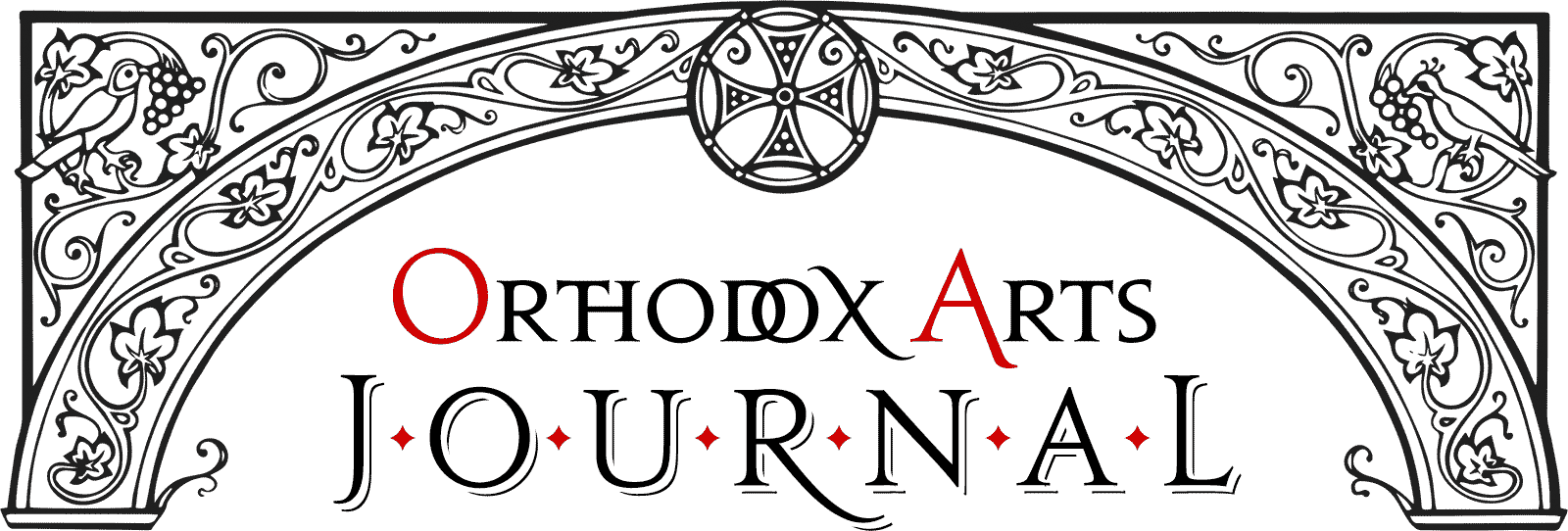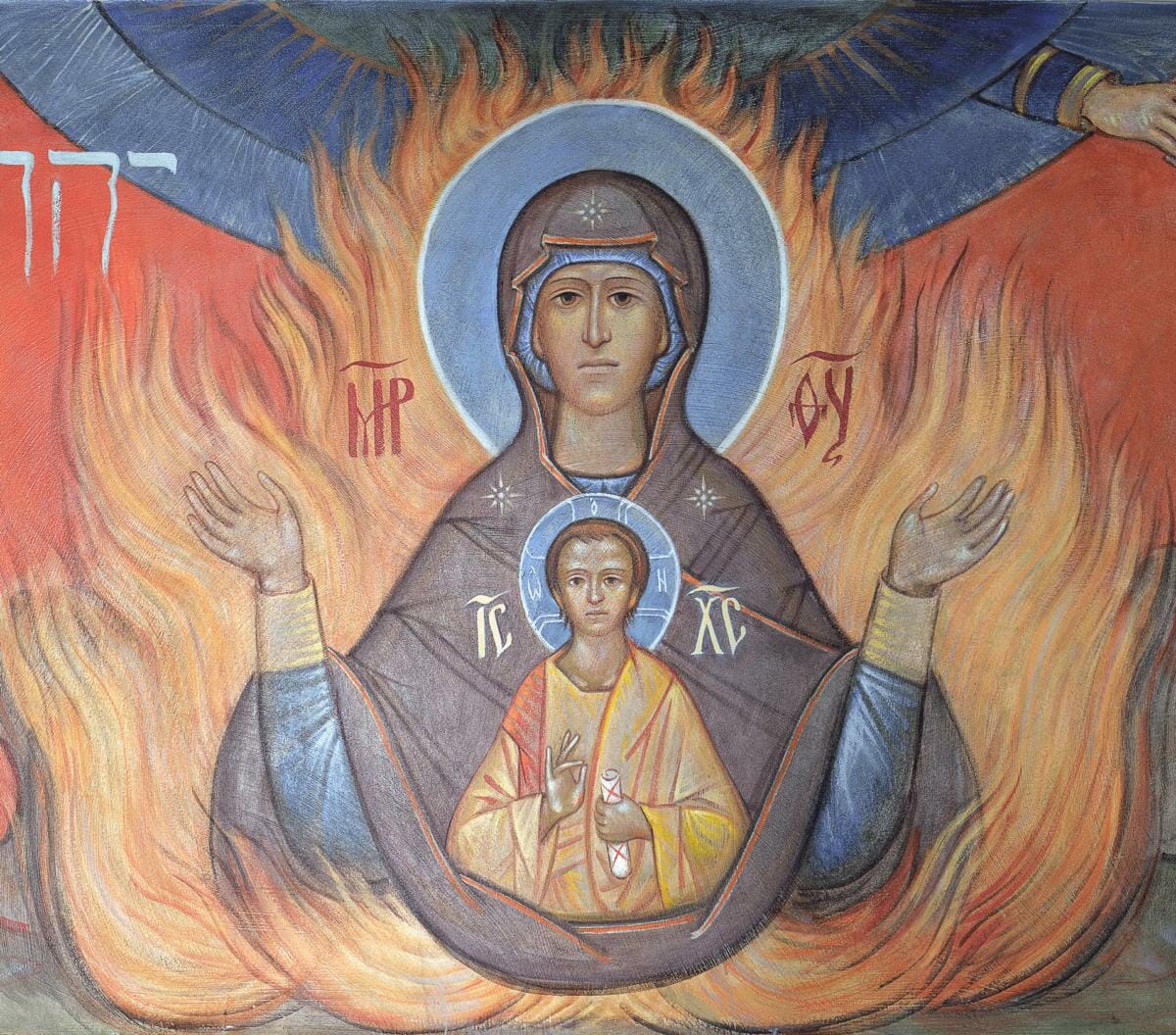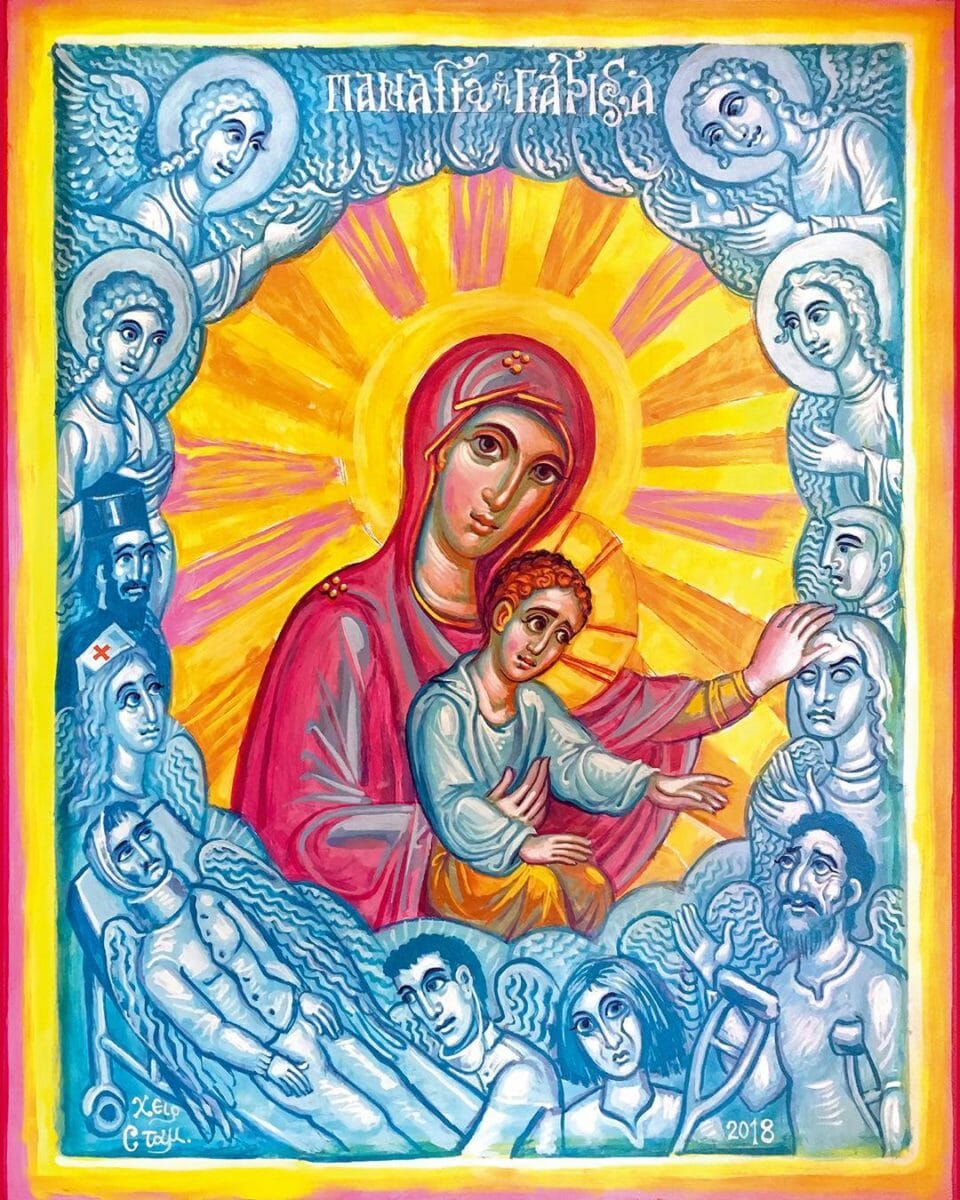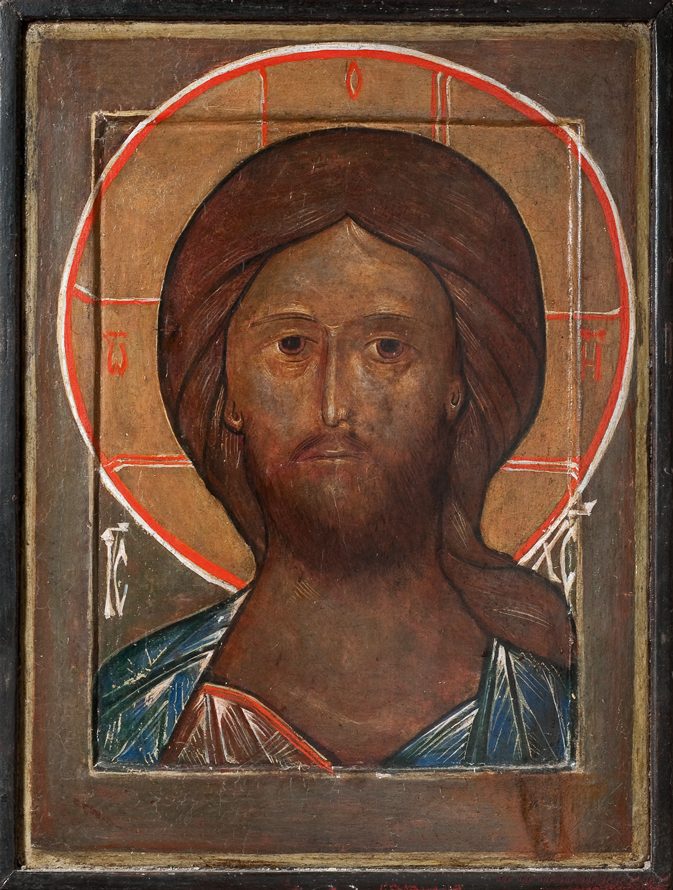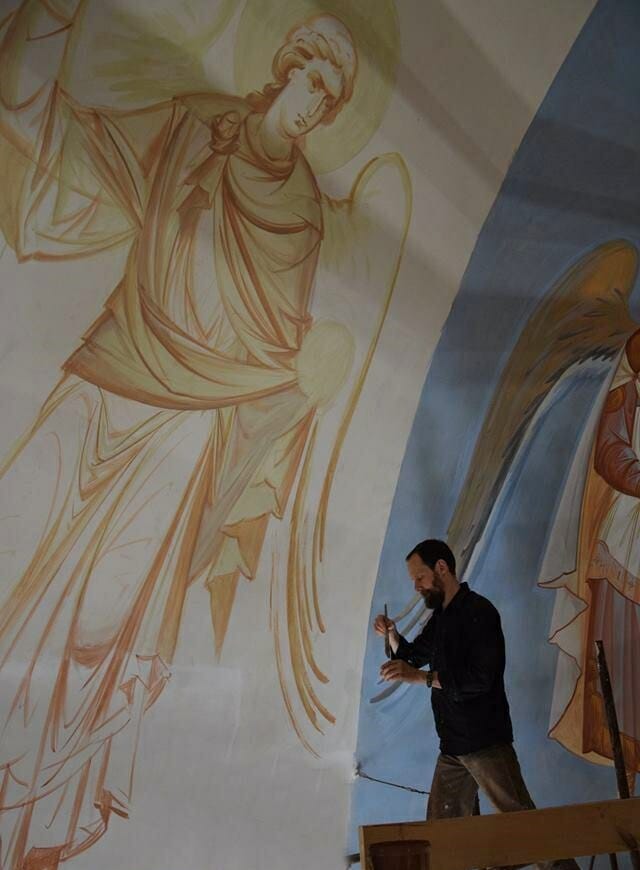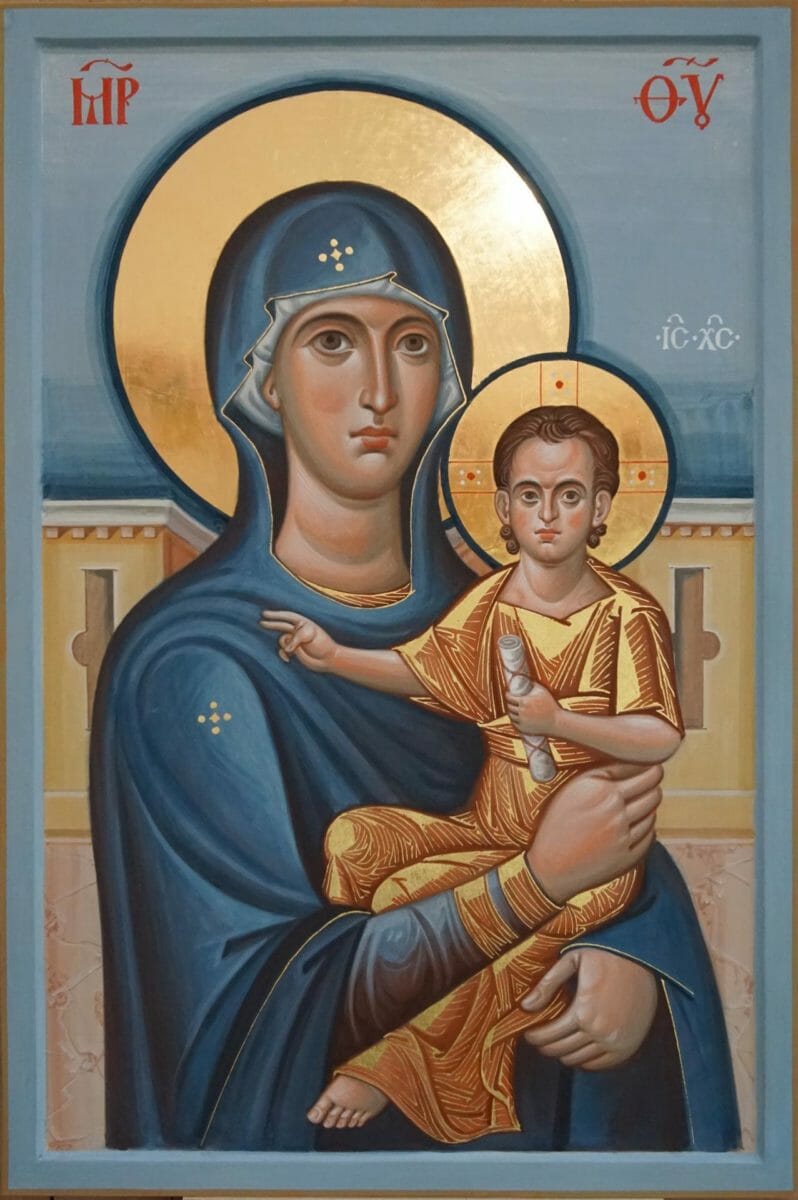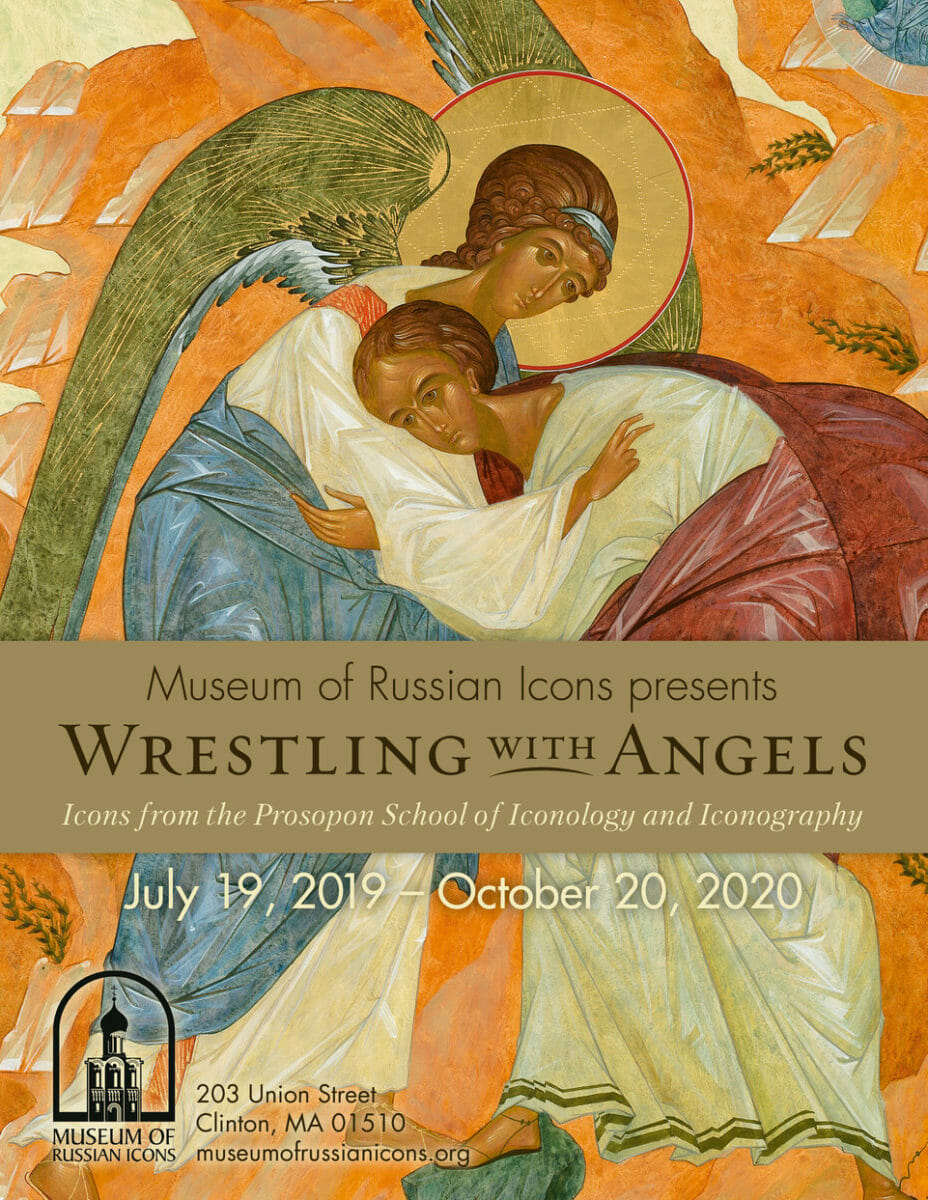Iconography
Murals for the Burning Bush Chapel and Prothesis at St John of the Ladder in Greenville, South Carolina
Introduction to the Project I have been commissioned to design and paint the wall iconography for the parish church of St. John of the Ladder in Greenville, South Carolina. This beautiful temple is of Andrew Gould’s design. His OAJ article about it appears here. I intend to post updates on the iconography project occasionally. As…
Continue reading »The Icon Painting of Fr. Stamatis Skliris: A Call for Authenticity
It could be said that Fr. Stamatis Skliris ranks as one of the most important, albeit idiosyncratic and challenging, contemporary iconographers residing in Greece today: idiosyncratic, because his style stands out in a category of its own, in its personal, expressive potency and unique, at times odd, pictorial synthesis; challenging, because he often breaks all…
Continue reading »A Retractable Icon Screen
Parishes in the Wilderness Orthodox parishes in Britain often have to share a church with Anglican parishes. Before each service they will usually need to set up all the furnishings and icons needed for Orthodox worship, then put them all away again at the end. It’s all quite tiring, both emotionally and physically, so the…
Continue reading »Review of “TREASURE IN A BOX: A Guide to the Icons of St Andrew” by Mary Kathryn Lowell
In this newly published book, Mary Lowell describes the eighty-six icons and murals painted by Ksenia Pokrovsky (1942-2013) for St Andrew’s Orthodox church in Lexington, Kentucky. The icons and this book about them comprise a graphic account of the history of salvation, a visual catechism. The icons depict not just the major feasts of the…
Continue reading »Fr Gregory Kroug – An Exhibition Honoring the 50th Anniversary of his Repose
The Exhibition In late June, I was blessed with the opportunity to spend a week in Paris, attending an exhibition in honor of the 50th anniversary of the repose of iconographer monk Gregory Kroug. The event ran from May 14th through June 30th, and included a curated exhibition of Kroug’s iconography displayed in the…
Continue reading »The Living Icon
Editor’s Note: This essay was originally written in Russian by master iconographer Anton Daineko of Minsk, Belarus. It beautifully explores the paradox of creativity within iconography from the very personal perspective of a lifelong practitioner. Anton and Ekaterina Daineko regularly teach icon-painting workshops in the USA, which are highly recommended. They have upcoming workshops in…
Continue reading »An Interview with Iconographer Vladimir Grygorenko – His Recent Work and Developing Style
A. Gould: How did you first set out to be an iconographer? What led to this decision, and what was your initial artistic training? V. Grygorenko: I began painting icons long before my conversion to Christianity, which happened back in 1991. For nine years I studied traditional oil painting in the art studio at Dnipropetrovsk…
Continue reading »Coming Soon: The Liturgical Arts Academy, August 18-24 2019
English-speaking Orthodox faithful in the United States who have wanted to learn the liturgical arts of the Orthodox Church — music, iconography, vestments, architecture and furnishings design, etc. — have historically had limited opportunities to study with knowledgeable teachers. Some have had the opportunity to go overseas to countries such as Greece and Russia to…
Continue reading »‘The Mustard Seed Garden Manual of Painting’: A Chinese painting manual offers inspiration to iconographers
Truth is truth wherever it is found. In fact, it is all the more delicious when found in unexpected places. I was at the opening of an exhibition of The St John’s Bible, for which I had been one of the illuminators, and fell into conversation with one of the professors at Minnesota University. We…
Continue reading »Wrestling with Angels: Icons from the Prosopon School
The Museum of Russian Icons in Clinton MA will premiere Wrestling with Angels, an exhibition of forty-six contemporary icons by sixteen iconographers from the Prosopon School of Iconology and Iconography, July 19-October 27, 2019. Exploring the recent renaissance of this ancient tradition, the exhibition will feature icons by the founder of the Prosopon School, Vladislav Andrejev, along with works…
Continue reading »